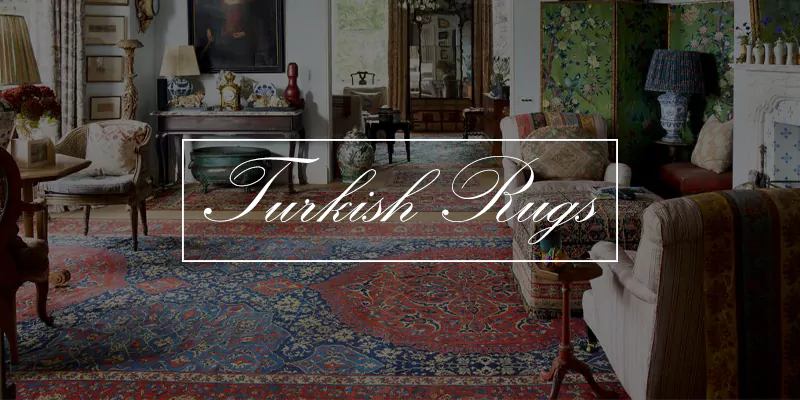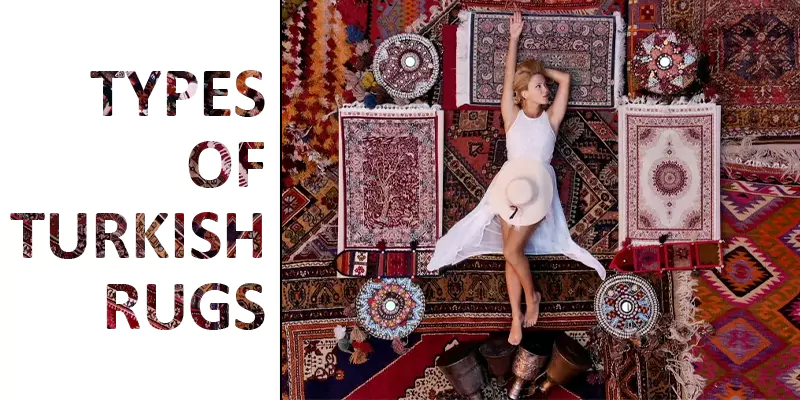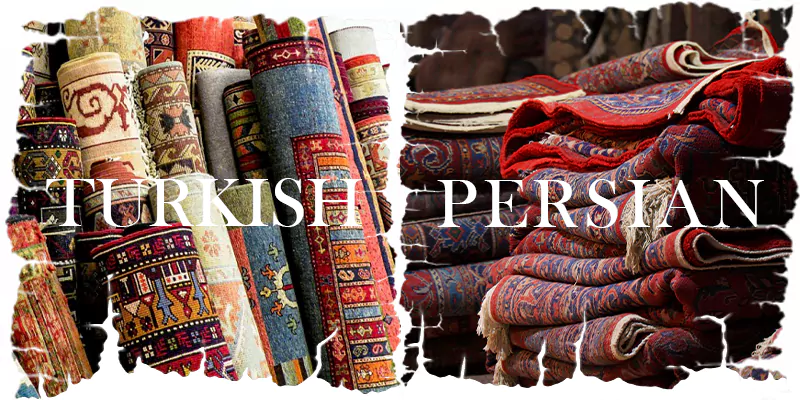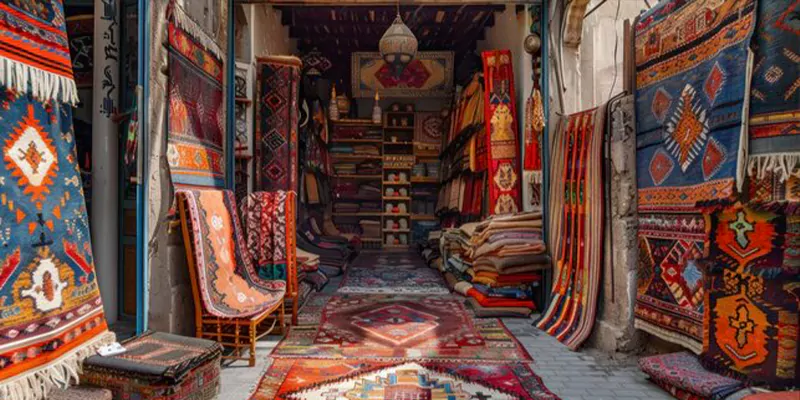- Abe
- Rug & Carpet
- 762 views
- 0 comments
Turkish rugs have also undergone transition, due to the change of political regimes and social relations in Turkey over the term. Anatolian history and the relationship with other peoples from the period of the Seljuks until the Ottomans also influenced already the designs, ornaments, and techniques of production of Turkey carpets and therefore they are not only fabrics and threads but also artifacts of history.

The Brief History of Turkish Rugs
The identified major historical transformative event which impacted the development of the Turkish handmade rugs was at the battle of Manzikert in 1071 AD whereby Seljuq Alp Arslan triumphed as the onset of the dominance of Seljuq Turks in the region. This period was characterized by the Persia and the Caucasus rug weaving as well as the Turks who came to affect the region before shifting to Anatolia.
In the early thirteen hundreds Mongol invaders deconstructed the Seljuq domain and the Turkmen tribes especially the Oghuz Turks built their dominance which is a section of the Ottoman Empire.
The Ottomans, who came to power in the Lancet century not only continued the tradition of the production of rugs but also expanded it. Besides, they established the first court carpet weaving center in Hereke that continues to produce large-sized, high-quality carpets for palaces and as gifts to European countries.
Cyrus Crafts; Luxury & Unique Products
Types of Turkish Rugs
Turkish rugs (also known as Anatolian rugs) are usually divided by their patterns, materials, and place of origin. They are recognized for their long-wearing life and high quality, which are accounted for by the double-knotting technique used in the making of the Turkish carpet. Both yarns make two passes through the rug thus increasing the durability of the rug. In this method, each pair of warp threads is knotted side by side in a frame with wool, silk, or rayon, and at least one row of wefts is compressed.
Of all the main types of Turkish carpets which are Uşak or Ushak, Kilim, and Ghiordes, Uşak carpets have a distinctive position in the culture of carpet weaving. This kind of rug first appeared in the region called Ushak, which is located in the western part of Anatolia and was widely used all through the early periods of the Ottoman Empire up to some decades of the twentieth century.
Uşak rugs are peculiar because a certain family of patterns is associated with them; However, this type of carpet was produced in large workshops for trading purposes. The detailed patterns of their works, frescoes of which are depicted in some 16th-century paintings, remain popular with collectors today.

Turkish Rugs Materials
The selection of the paragon decides a Turkish rug’s worth. Wool and silk are used because of their strength and, as a result, these rugs can serve their function for decades or even centuries. Conventionally, there is a probability of wool and silk knots interlinked with cotton of the warp kind existing in vintage Turkish rugs.
The two fabrics can be woven in such a manner that wool on the cotton or silk on the cotton will not break the warps while interlacing makes tighter knots. Other common combinations include wool-on-wool arrangements, or silk-on-silk arrangements as they give different textures, and feels.
Turkish Rugs Dyes
Traditional and classical patterns of weaving affect the level of natural dyes, making Turkish rugs not only genuine but also beautiful. These natural dyes are extracted from flowers, roots, insects, and other stuff and have been practiced in many Anatolian villages from time immemorial. Regarding natural dyes, it is worth mentioning that natural dyes are rather durable, and, as time passes, turn into a work of art.
Turkish Rugs Compared to Other Rugs
Turkish rugs are iconic in their own right and offer distinct characteristics that set them apart in the world of carpet weaving. The primary distinguishing factor lies in their materials, knotting techniques, the resulting aesthetic, and the durability of the rugs.

Turkish Rugs Vs. Persian Rugs
Although usually people refer to them as the same, Turkish and Persian rugs belong to two different traditions of rug weaving that are characterized by numerous features and possess their historical backgrounds. Knowledge of these differences can also improve your perception of these artistic creations by the master artisans to the extent they become more appreciable and valuable.
Turkish Rugs Vs. Persian Rugs: Knotting Techniques
The knots used in handmade Turkish rugs are normally double-knotted, known as the Turkish or Gördes knot; a fiber is looped around two strings at one time. This causes the rugs produced by this method to be highly durable resistant suitable for commercial use. Meanwhile, Persian rugs use the single knot technique called the Persian knot which is more complex and tightly woven creating rich and detailed designs conversely it suffers from the stability issue of the single-loop knots.
Turkish Rugs Vs. Persian Rugs: Design and Aesthetic
There are fundamental differences in the knotting of Turkish and Persian rugs, which affected the overall presentation of the two styles. Most Turkish rugs bear central powerfully geometric and tribal looks that are simpler to manufacture with the help of double knotting, as Persian rugs have a lot more patterns and motifs such as shah abbasi rug motif and heriz rug motif. These tend to be simplistic and more often than not the designs are repeated with straight lines generating a firm appearance.
On the other hand, we are talking about the Persian rugs, which are famous not only because of their patterns, but because of the complexity of the patterns, more specifically, floral patterns, garden scenes medallions, and even the actual depictions of animals and people. Persian knot allows for the creation of these complicated patterns which enhance the luxurious look of Persian rugs as well.
Turkish Rugs Vs. Persian Rugs: Materials
The earlier Turkish rugs used resources locally available and the main material used in the rug was wool procured from sheep and goats. Still, it is so astonishing as these rugs are still being produced from natural fabric like wool and cotton possibly blended with silk. The Persian rugs which have always used luxurious silk threads also use high-quality wool and cotton. The material that the rugs are made of, contributes to the texture, quality, as well as value of the rugs.

How to Choose a Turkish Rug for Your Home
When you are choosing a type of Turkish rug for your house, the great number of Turkish rugs and the history that stands behind each of them will be interesting and puzzling. These are some factors to help you decide when selecting a rug that will complement the look of your room while also being a work of art preserved as a form of cultural heritage.
The Rug's Role in Your Space
Turkish rugs are not just ordinary mats on the floor but they offer space definition, warmth, and coordination with the room’s interior design. If you are planning to make a dramatic focal point in a living room; or a sophisticated addition to your bedroom, think about how the rug will work where it is placed. Turkish rugs, especially large selvage rugs, in various geometrical patterns and rich hues can turn a room into an area that is immediately cozier. In this context, the kind of rugs that are featured could be replaced with simpler designs and amazing colors that are fit for a more contemporary atmosphere.
The Right Material
When it comes to the materials used, it lets in the longevity and touch of the rugs. The usual material that has been used in making traditional Turkish rugs includes wool, cotton, and silk. Every material has a different feel and durability. Wool-based rugs are relatively tougher and therefore used in the most used areas while silk rugs are relatively delicate and used in areas where they are unlikely to get damaged easily. A hand-knotted or hand-tufted handmade rug involves using natural dyes and age-old methods of manufacturing and such a product is often expected to appreciate or at least maintain its value in the long run.
The Right Size and Pattern
The size of the rug should depend on the area that it is to cover. If a wall-to-wall rug is selected, it should complement the size of the room beautifully; if it is too small, the room will look as if it lacks unity; on the other hand, if too large, the room becomes overpowered by the rug. Besides, the pattern of the rug should match the other features in the room such that they create a harmonious decorative theme.
Usually, flowers or geometric patterns are depicted in the oriental rugs and Turkish rugs follow the same pattern though the designs may be subtle or exaggerated. The type of pattern should complement the appearance of your room and roofing as well as your preference.
Turkish Rugs FAQs
These are some of the most common Frequently Asked Questions about Turkish Rugs on the Internet and we have answered all in detail.
Are Turkish Rugs Worth the Investment?
Purchasing native Turkish rugs can also prove to be sound provided that these decisions are based on the type of the rug, condition, age, rarity as well as the current demand for the particular rug. Fine Turkish rugs of good weave and preferably natural fibers like wool or silk can become long-lasting investments and even increase in value.
How can you determine the age of a Turkish rug?
If you feel grittiness, sand, or smoothness on the back of a Turkish rug, then that is how older rugs will feel. So, if the rug is very dense in its weaving but still not stiff or, conversely, soft and flabby, it is most probably rather old, as rugs deteriorate with time and become more flexible. Besides, because dyes were developed in sequence, the kind of dye used in the rug can also dictate much about its age. You can also read about the Pazyryk rug, the oldest rug in the world.
What characteristics indicate a high-quality Turkish rug?
Generally, the knot and the tightness of rendering determine the quality of the Turkish rug available in the market. The better quality rug will have higher knot density and be tightly knotted to prove the workmanship put into the piece. One has also to pay attention to some signs of wear and damage to the rug since it will affect the worth and originality of the rug.
What is the value range for Turkish rugs?
In general, the value of Turkish rugs depends on the size of the rug, the patterns on the rugs, and the material used in making the rug. A prayer rug or doormat may cost roughly $100 and up. Essentially sized kilims and those with set designs can cost between $500- $ 5,000 or even much more. Silk Turkish rugs, elaborated in their weave and soft to the touch can even cost fifteen thousand dollars or more.









Comments (0)